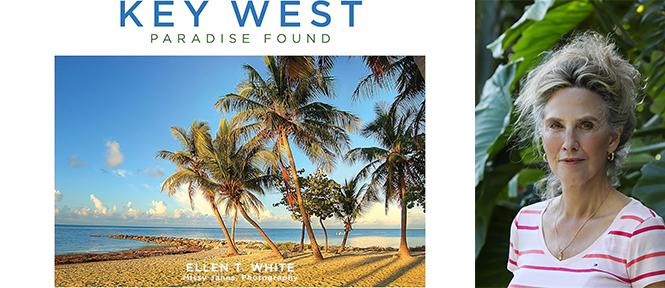“Key West: Paradise Found”
Ellen T. White
Missy Janes, Photography
Pineapple Press, $29.95
When Ellen T. White's book "Key West: Paradise Found" landed on my lap, with a request for a review, I sighed deeply. Only a few days after the election, I was too angry at Florida to say anything nice about it.
The truth is, the state has never enthralled me. In the last 25 years I've probably been there twice. But, more recently, as I watched the region's political system devolve into a surreal and frightening exhibition of anarchistic art, I knew I was done with the place. I'll take the palm trees in California any day.
So, with a hardened heart, I opened this awkwardly sized photography book — too small to be a coffee table centerpiece and too large to hold comfortably in your hands and leaf through. I scanned the photographs, most of which belong to Missy Janes, and was happy to soak up the subtropical "Margaritaville" atmosphere. The saturated cobalt waters and sky, the pastel Victorian-style mansions and Bahamian conch cottages, the only living coral reef in North America, the kitsch and other iconic landmarks, such as the Southernmost Point 20-ton buoy that sits at the edge of the Atlantic, a mere 90 miles from Cuba.
Nice photos but rarely drool-worthy. This is not a slight on the photographer's talent, which is clearly abundant, but another issue with the book's dimensions, resulting in what looks more like a blog conversion than a luscious photography showstopper.

Then, I began to read Ms. White's words, her introduction in 1999 to this thin strip of coastline between high and low watermarks that's the southernmost tip of the United States, and about 160 miles from "civilization" — i.e., Miami. For her, it sparked an epiphany.
"It's impossible to be in Key West for even a day and not realize it's like nowhere else," she writes in her opener, which reads like a love letter to the town. "There's no advantage to putting on airs in Key West. Or, to dropping names. It's truly the last egalitarian society — it really doesn't matter who you are. Not to mention it celebrates eccentricity with enthusiasm. You could sashay down Duval in your slippers and nighty, if it struck your fancy, and receive compliments. It's nothing short of liberating."
Ms. White, who divides her time among New York, Springs, and Key West, is an accomplished writer. She has contributed to a variety of publications, including this newspaper and The Key West Citizen, and was formerly the managing editor of the New York Public Library, for which she launched Bookmark, the quarterly magazine. Additionally, she is the author of "Simply Irresistible: Unleash Your Inner Siren and Mesmerize Men With Lessons From Some of the Most Famous and Infamous Women in History." A how-to for wannabe femmes fatales.
In her Key West book, history also plays a big part. And what a past this tiny town has had. The author deftly charts its trajectory from an important Navy base during a multitude of 19th-century conflicts, to being christened the world's wrecking capital — the practice of salvaging goods from shipwrecks around the reefs — to a cigar-making boomtown, to a mecca for drag queens, and even to its short-lived attempt in 1982 to declare itself a micronation called the Conch Republic. It's all fascinating stuff.

No Key West storyline is complete without a spotlight on its most famous former resident — Ernest Hemingway, who moved there in 1928 when it was a sleepy, depopulated place. The great writer had already published "The Sun Also Rises," which had made him famous, but in Key West he would go on to write most of his remaining important books.
The "Hemingway effect" — fish big, eat well, drink hard — exists today on hedonistic Duval Street, the main tourist artery that seems to serve as a mile-long alfresco nightclub with an "it's 5 o'clock somewhere" credo. Ms. White dedicates a substantial number of pages to the plethora of watering holes and eateries there, steering the book into travel guide territory.
Even the photos seem to take a back seat as the lengthy, but riveting, copy informs us that the likes of Jimmy Buffett, Tennessee Williams, Hunter S. Thompson, and Truman Capote, along with the sun-kissed hordes over the years, let it all hang out in the area's carnival atmosphere.
This wild-eyed island town may not be paradise for everyone, but it's not hard to see why, for the author, Key West "has become a part of my DNA." It's a place for nonconformists, and the book does justice to her claim that this quirk of a town is like no other place on earth, where everyone has gone fishing and where everything looks a little brighter, a little brasher, and a little more intriguing.
Judy D'Mello, a contributor to The Star for many years, has also had her work featured in The New York Times. She is a co-author of "Lucky: A True Story," about an ultramarathoner and his dog who ran across America in 2021.

